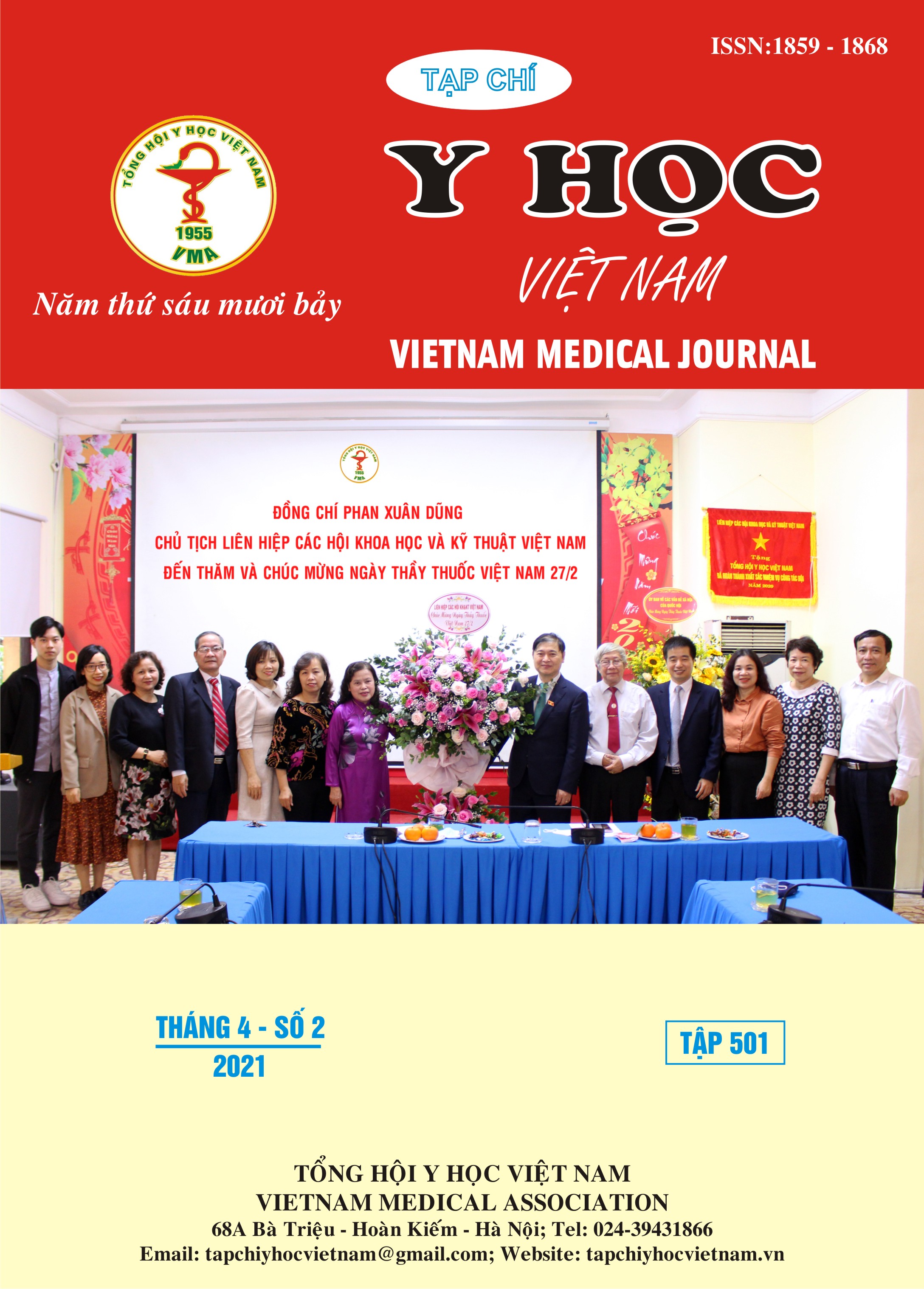INITIAL RESULTS OF USING VIET DUC UNIVERSITY HOSPITAL’S MODIFICATION OF FROZEN ELEPHANT TRUNT TECHNIQUE
Main Article Content
Abstract
Objective: To present surgical technique and initial results of using Viet Duc University Hospital Modification of Frozen Elephant Trunk (FET) to treat complex thoracic aortic diseases in one stage. Material and method: There were a retrospective, descriptive study of consecutive patients, who underwent FET operation at cardiovascular and thoracic center, Viet Duc University Hospital from 01 January to 30 December 2020. There are eighteen patients, including in this study. Fourteen (77,8 %) patients were man. The average age was 56,2±8,6(69- 33) years. There were two (11,1%) patients, who had thoracic aortic aneurysm; Sixteen (88,9%) - aortic dissection, in whom ten (55.6%) were in acute A type. two (11,1%) patients had undergone previous aortic operations, three (16,7%) patients had Marphan’s syndrome and two (11,1%) had III -stage of chronic renal failure. All patients underwent FET procedure by unique protocol. Brain protection was achieved by antegrade bilateral selective cerebral perfusion and moderate hypothermia (28°C) in all cases, Using MASIMO machine to control brain oxygenation. Result: There was no dead. Sixteen (88,9%) patients was used isolated FET, two (11,1%) – FET+ Bentall procedure. Bypass time was 186,2±49,7 minutes (330-136); Cross clam time -112,7±42,6 minutes (205 –68); Time of circulatory arrest – 32,6±10,3 minutes (max 48 - min 20), total operating time 6,1± 0,9 hours (8 – 5). Complication: There was no bleeding, 4 (22,2%) patients had prolong ventilation and require tracheotomy, haemodialysis by acute renal failure in 4(22,2%) patients, Leak type 1 in 2 (11,1%) patients. Conclusion: The use of FET Modification by Viet Duc University Hospital was effective, safe and gave good results.
Article Details
Keywords
Thoracic aortic disease, Frozen elephant trunk, Aortic dissection
References
2. Di Marco L, Pantaleo A, Leone A, Murana G, Di Bartolomeo R, Pacini D. The Frozen Elephant Trunk Technique: European Association for Cardio-Thoracic Surgery Position and Bologna Experience. Korean J Thorac Cardiovasc Surg. 2017;50(1):1-7. doi:10.5090/kjtcs.2017.50.1.1
3. Roselli EE, Idrees JJ, Bakaeen FG, et al. Evolution of Simplified Frozen Elephant Trunk Repair for Acute DeBakey Type I Dissection: Midterm Outcomes. Ann Thorac Surg. 2018;105(3):749-755. doi:10.1016/j.athoracsur.2017.08.037
4. Liakopoulos OJ, Kroener A, Sabashnikov A, et al. Single-center experience with the frozen elephant trunk procedure in 111 patients with complex aortic disease. J Thorac Dis. 2020;12(10):5387-5397. doi:10.21037/jtd-20-1531
5. Damberg A, Schälte G, Autschbach R, Hoffman A. Safety and pitfalls in frozen elephant trunk implantation. Ann Cardiothorac Surg. 2013;2(5):669-676. doi:10.3978/j.issn.2225-319X.2013.09.16
6. Kremer J, Preisner F, Dib B, et al. Aortic arch replacement with frozen elephant trunk technique – a single-center study. J Cardiothorac Surg. 2019;14(1):147. doi:10.1186/s13019-019-0969-9
7. Hohri Y, Yamasaki T, Matsuzaki Y, Hiramatsu T. Early and mid-term outcome of frozen elephant trunk using spinal cord protective perfusion strategy for acute type A aortic dissection. Gen Thorac Cardiovasc Surg. 2020;68(10):1119-1127. doi:10.1007/s11748-020-01328-z
8. Frozen elephant trunk does not increase incidence of paraplegia in patients with acute type A aortic dissection - The Journal of Thoracic and Cardiovascular Surgery. Accessed April 13, 2021. https:// www.jtcvs.org/ article/S0022-5223(19)30800-1/fulltext.


